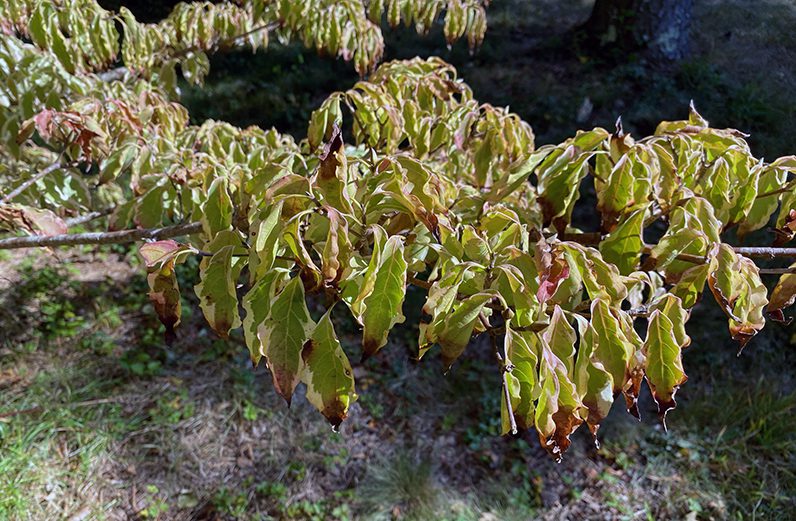Severe Drought!
Severe Drought!
At the end of July I wrote a blog post about how dry it was on the Cape. At the time I didn’t imagine that the drought we were experiencing would extend into October. Last week the University of Massachusetts made note of our extremely dry soils in their landscape message, pointing out that even in managed (irrigated) landscapes, the lack of rainfall is likely to result in a variety of problems into the future.
Plants that have been stressed by drought are more prone to insect and disease attack, as well as winter damage. Because the soil is so dry, root systems of shrubs and trees are dying back, which is likely to result in dieback of stems this fall and winter. Recent cloudy, drizzly days, such as the Monday when I am writing this, do nothing to soak our parched soils or hydrate plants.
Until we have several periods of regular, soaking rains, here are some ways we can help our plants.
- Be sure that you have a rain gauge so that you have an accurate idea of just how much rain has fallen.
- Many of our customers wonder why their plants are wilting when the irrigation has been on all summer. We suggest that you dig down twelve inches into the soil of shrub and perennial beds (a few feet away from plants so you don’t disturb the roots too much) to see just how dry your soil actually is.
- Water wilting plants deeply if your town allows for sprinklers or soaker hoses to be employed. Setting a sprinkler on a stressed shrub or tree for 4 hours once a week is far better than irrigation that is going off every other day for 20 minutes.
- If it’s cloudy, and there’s any chance of rain, that’s the time to turn on the sprinklers! Most people don’t water on drizzly days, but it’s far better for plants if you do. The foliage is already wet and because it’s cloudy there is less evaporation of the water you are delivering to the plants. Additionally, the water that is coming from your sprinklers starts to break the surface tension of the dry soil, allowing any rain that nature provides to soak into the soil instead of running off.
- If you see branches on plants such as rhododendrons that appear to be dying, wait until late next spring to cut these off. It’s too early to tell if they will continue to die back over the winter or if the plant will produce new leaves on these stems next year.
- Although at this point you should wait to fertilize until next spring, a one inch layer of compost or composted manure around shrubs, trees and on the surface of perennial gardens would be a gift to your plants. Organic matter will help the soil stay healthy and assist with holding moisture in moving forward. You can put that compost right on top of a thin layer of mulch, and add another inch of mulch over that in late fall or next spring.

Subscribe To Our Newsletter
Sign up for our weekly email about sales and events.
